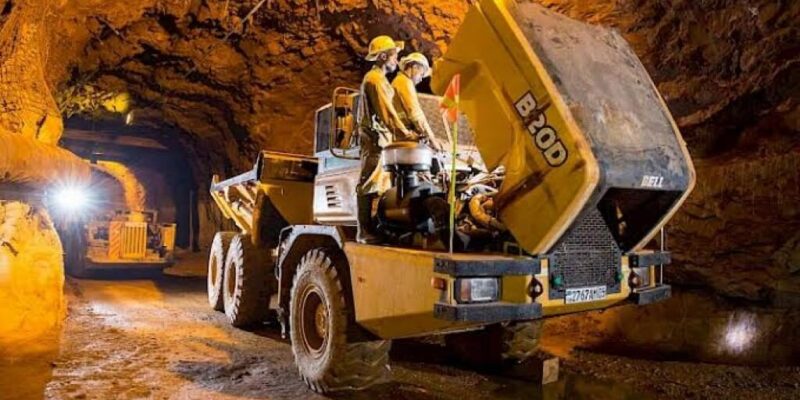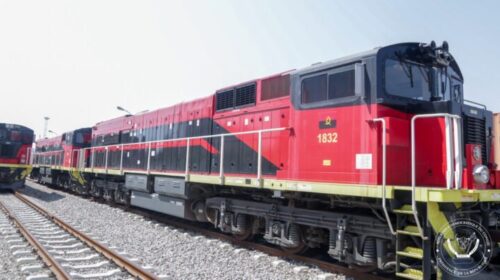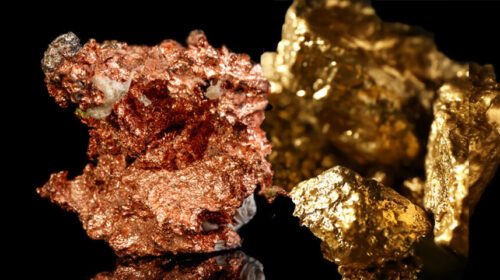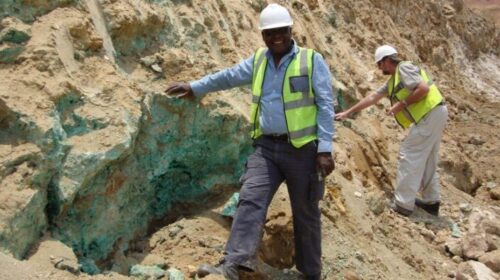The DRC can shake up the global hierarchy of copper producers thanks to the Kamoa-Kakula mine
According to data from the Fich Solutions research agency on forecasts of copper mining production in the world this year and the rest of the decade, the DRC will grow by 6.9% in 2021, driven by the entry into production from the Kamoa-Kakula mine. The asset owned by Ivanhoe Mines already confirms the expectations placed on it and can potentially help the DRC to overtake its competitors in the hierarchy of global producers. Good news, as observers agree to predict an explosion in demand for red metal.
Global copper production will reach nearly 30 million tonnes per year in 2030 compared to just over 21 million tonnes this year. Companies are in fact increasingly motivated by analysts’ forecasts of an explosion in demand linked to the consumption of the red metal necessary for the success of the green revolution.
As the leading African producer, the DRC will not escape this surge. Between 2021 and 2030, Congolese production will almost double, according to Fitch estimates. It will thus drop from 1.39 million tonnes this year to more than 2.4 million tonnes at the end of the decade.
Between 2021 and 2030, Congolese production will almost double, according to Fitch estimates. It will thus drop from 1.39 million tonnes this year to more than 2.4 million tonnes at the end of the decade.
The country’s contribution to world copper production will follow this curve significantly, reaching more than 8% in 2030, compared to 6.4% this year. In addition, the DRC will become, according to these data, the third world producer of copper behind the Chilean juggernaut and its Peruvian dolphin, but it will pass in front of China. To explain this increase, Fitch mainly mentions the entry into production of new mines in recent years, in particular the Kamoa-Kakula mine.
The future second largest copper mine in the world
Gigantic. This is the adjective that fits best when it comes to the Kamoa-Kakula mining complex. Whether it is the total investment, estimated at several billion dollars, mineral resources or expected revenues, Kamoa-Kakula has few equivalents around the world.
Kamoa-Kakula will be the second largest copper mine in the world.
According to Ivanhoe’s estimate, Kamoa-Kakula’s indicated mineral resources reach 1.38 billion tonnes, grading 2.74% copper for 38 million tonnes of copper contained. To exploit these immense resources, Ivanhoe Mines published an integrated development plan last year. The Kamoa-Kakula Preliminary Economic Assessment included in this document projects an annual processing capacity of 19 million tonnes over a 43-year lifespan with eight separate mining operations and their associated infrastructure, for an estimated total cost of over $ 17 billion. This amount includes in particular the factories and the rehabilitation of the hydroelectric power stations to supply the mining complex.
To reach the end goal, the company started with the Kakula deposit (phase 1) which required an estimated capital of $ 336 million.
Ultimately, Kamoa-Kakula will have an estimated maximum production of over 800,000 tonnes per year.
After 24 years of exploration, the mining complex entered production last May, two months ahead of the initial schedule.
The Kamoa-Kakula Preliminary Economic Assessment included in this document projects an annual processing capacity of 19 million tonnes over a 43-year lifespan with eight separate mining operations and their associated infrastructure, for an estimated total cost of over $ 17 billion.
The project is expected to deliver up to 95,000 tonnes of copper concentrate this year, while over a full year, Phase 1 production is expected to be 200,000 tonnes. The second phase, which will cost around $ 600 million, is already underway and will bring this volume to 400,000 tonnes. Start-up is scheduled for the third quarter of 2022. Ultimately, Kamoa-Kakula will have an estimated maximum production of over 800,000 tonnes per year, just below the 2020 national production of Zambia, the second largest African producer. Kamoa-Kakula will be the second largest copper mine in the world.
Other advantages up the sleeve
If for the DRC, Kamoa-Kakula will be the locomotive to shake up the world hierarchy, the country has other assets to fulfill Fitch’s predictions. We can already mention the Mutanda copper-cobalt mine where Glencore intends to resume production next year, not to mention the Deziwa copper-cobalt mine which is supposed to produce 80,000 tonnes of copper per year. The efforts undertaken in recent months to clean up artisanal mining in the DRC should also play a significant role in increasing national production. However, it is above all on its unexploited deposits that the DRC can count on to achieve its final objective.
However, it is above all on its unexploited deposits that the DRC can count on to achieve its final objective.
In recent months, against a background of rising prices, studies and declarations have multiplied calling on companies to invest heavily in exploration and then exploitation of copper, in order to meet the strong demand to come.
One sentence in particular, spoken last April by Robert Friedland, the boss of Ivanhoe Mines, sums up the question quite well. Speaking at the world copper conference organized by CRU London, he said: “Everything is copper, copper, copper, copper, copper, copper”. If it is already used in several sectors ranging from transport to building through electricity, the energy revolution will indeed lead to an increase in the consumption of red metal. For example, hybrid or electric vehicles consume up to two or four times more copper than thermal vehicles. Congolese copper projects should therefore benefit from this craze for the metal with more investors ready to finance the construction of new mines.This should, for example, be the case for the Kisanfu project, which hosts 6.28 million tonnes of copper. After China Molybdenum bought the asset for $ 550 million in December 2020, another Chinese company, Contemporary Amperex Technology Co Ltd, acquired a 23.75% interest in it last April.
New profits for the DRC
The symbolic progression of the DRC in the hierarchy of world copper producers will obviously not be the only benefit that Kinshasa will derive from the increase in its national production. Indeed, revenues from the extractive sector will increase accordingly. President Félix Tshisekedi wishes to make his country better benefit from it. While he intends to stand for a new term in 2023, the Congolese head of state made a remarkable outing last May to castigate certain “investors who come to get rich on their own.” They come with empty pockets and leave as billionaires ”. He took the opportunity to announce his intention to review the rules of the game. “It is time for the country to readjust its contracts with the miners to seal win-win partnerships (…) I have really had enough! “,then declared the strong man of Kinshasa.
The demand for copper is such that the DRC can negotiate from a position of strength.
In the coming months, a new standoff could therefore pit the Congolese government against mining companies, this time with a serious advantage for the DRC. The country has reserves that the world needs, copper prices are at an all-time high and global demand is not expected to weaken. A boulevard therefore, to negotiate the best contracts that could finally help the DRC to develop and overcome this curse of raw materials that this country has suffered for ages.
![]()





